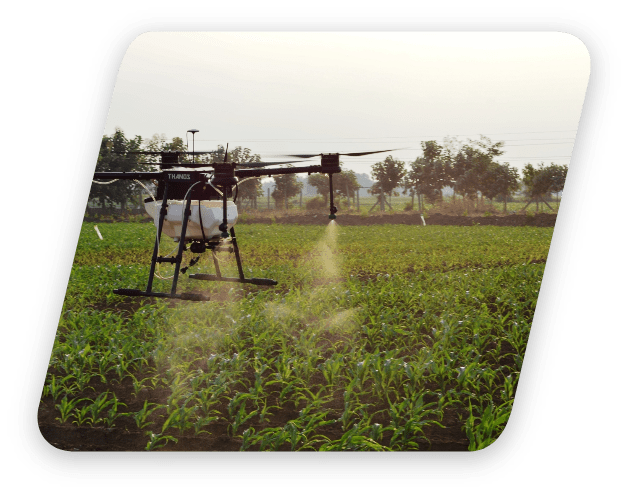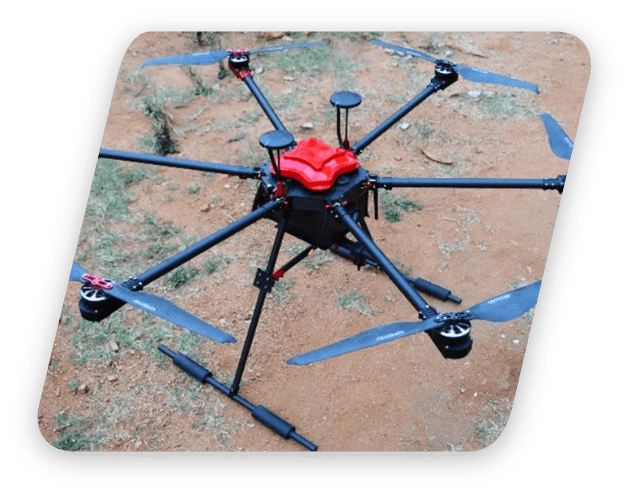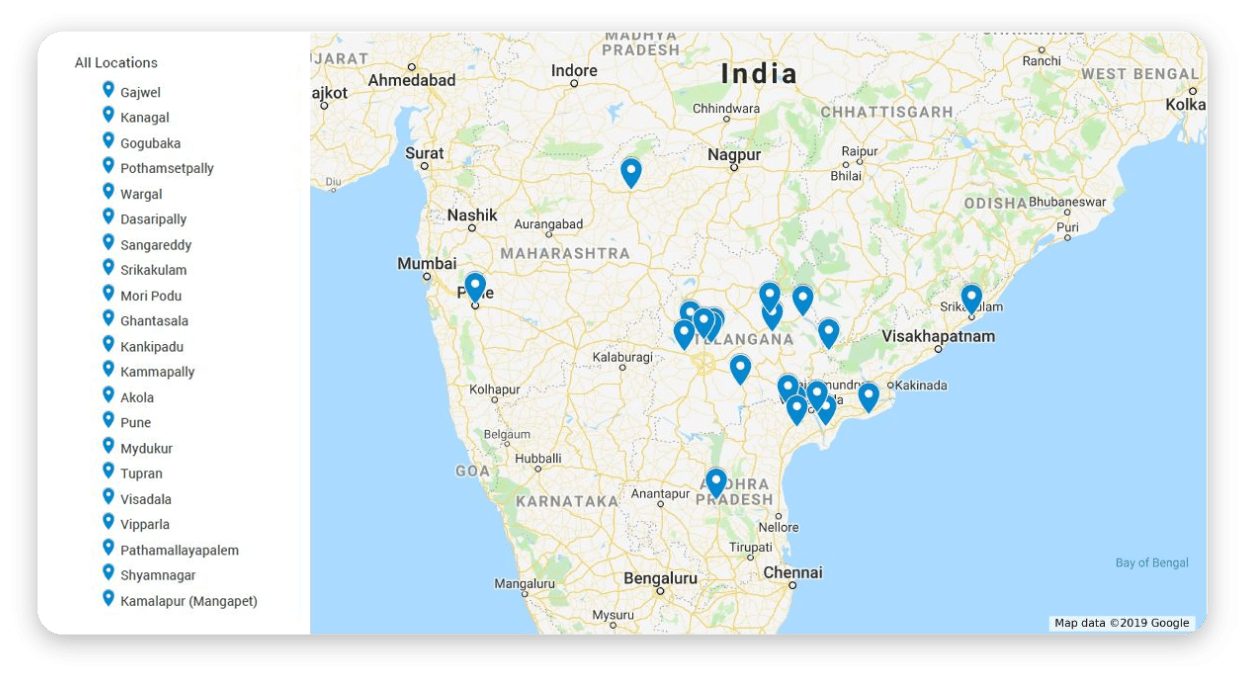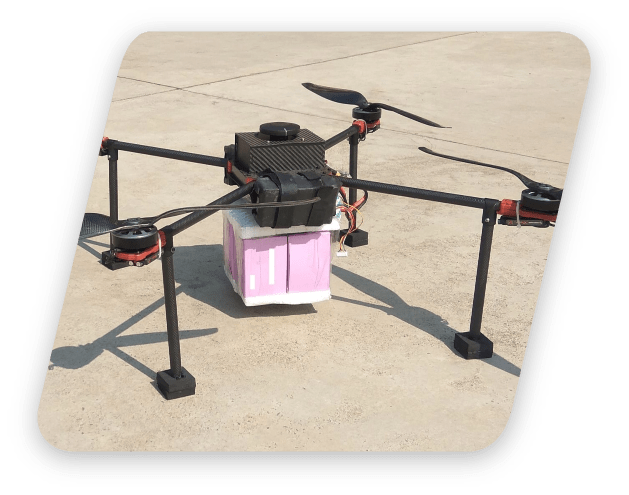Hello, everyone. Our last blog post was in October 2016, and we’re returning after a 3.5-year hiatus. We didn’t exactly disappear, as there were occasional news articles (print, online, and radio) about our work and accomplishments. We were simply deeply engrossed in the new direction we took in 2017. This post serves as a recap of what we’ve been up to and provides a glimpse of our future endeavors.
As you may know, we founded THANOS in May 2016 as an aerial surveying company using UAVs/drones to capture images and convert them into valuable insights for our customers. However, by mid-2017, we recognized that aerial surveying had become relatively easy to execute with a low entry barrier. Commercial drones like the DJI Phantom were becoming affordable, highly reliable, and user-friendly. Cloud-based and desktop-based image processing and analytics platforms such as DroneDeploy, Pix4D, Skycatch, and Bentley were also gaining popularity. The aerial surveying space had become highly competitive and challenging to distinguish oneself in. The future differentiation appeared to hinge on the drone platforms used (accuracy, resolution, coverage area per day) and the actionable analytics provided to customers.
With a shift in our focus, we decided to delve into niche areas where there was substantial potential to solve problems and make a discernible difference. We began searching for challenges where we could leverage our in-house capabilities to design and build high-quality UAVs/drones. Fortunately, an essential application came to our attention through end users and beneficiaries – FARMERS. Agriculture in India still relies heavily on manual labor, which can be arduous. Pesticide spraying, in particular, posed significant challenges due to its strenuous, hazardous, and inefficient nature. We conducted surveys and engaged with multiple farmers, realizing that this was a widespread issue across India. We identified three key problems affecting agricultural spraying – dwindling manual labor availability, inefficient manual labor spraying, and health hazards.
In December 2017, we went public at the AP Agritech Summit with our first product – an Agricultural Spraying Drone with a 5-liter capacity to address the problems mentioned above. The feedback we received from farmers at the exhibition and the demonstrations we conducted over the next few months resulted in a much more refined and increased-capacity Spraying Drone with a 10-liter capacity and a few intelligent features such as radar for terrain following and GPS for autonomous spraying. Fast-forward to today, we have worked with more than 50 farmers, sprayed over more than 500 acres, and collaborated with some of the largest Agrochemical companies in the world, such as Bayer, Syngenta, Coromandel, among others. Check out our 10-liter Spraying Drone – SYENA Q10 product page for more details about its technical aspects and capabilities.


During the period from January 2018 to now, we built several custom drones for institutions such as IIT Hyderabad, IIIT Hyderabad, TCS, and others for various applications. During the same period, we’ve also configured and repaired a countless number of drones for our customers, including college students, military personnel, aerial surveying companies, to name a few. We repaired custom-built as well as commercial drones such as DJI Phantom, DJI Mavic, and DJI Inspire. Check out more about our Custom Drone and Drone Repair capabilities here.
Whenever a new technology is introduced, it is important to demonstrate how it works and how the benefits of it can be realized by the end users. This is especially true of technologies which have a slight learning curve and which are introduced into domains such as Agriculture where technology penetration is still low. Keeping this in mind, we started doing Drone Spraying Trials and Demonstrations across Telangana, Andhra Pradesh, and Maharashtra since early 2018. We have so far covered around 35 locations in these 3 states and raised awareness about this technology and its potential. Below is a map showing a non-exhaustive list of Trial/Demo locations. Simultaneously, we have done Commercial Pilots in a few locations to understand the Economic Potential and Commercialization methodologies to adopt to ensure large-scale adoption of this technology.
Check out Services page to know more about our work on this front and the various modes in which we engage with our customers. We are currently awaiting certification of our SYENA-Q10 and Agricultural Spraying Guidelines to be put in place by the Ministry of Agriculture in coordination with DGCA so that we can scale up this technology.

We had a major achievement in February 2019 when our team won the Supply Drop Challenge at the Inaugural Drone Olympics conducted by MoD as part of Aero India Show in Bengaluru. Our Payload Delivery Prototype (picture below) accomplished the task of delivering 2 Kg of Payload over a 2 km distance in a highly precise and consistent manner, thus winning the challenge. Post the Drone Olympics win, the media coverage about our win spread throughout India, and we started getting inquiries from various divisions of the Indian army and from the farthest corners of the country. While we did not have enough resources to get into the same immediately, it definitely gave us validation that Payload Delivery is a very sought-after application and it gave us a huge boost to work on an upgraded market-ready version. Our Awards Page talks a bit more about various Recognitions and Achievements we had until now.


We would be remiss not to mention the various companies we partnered with during the last few years. In order to make our 10 L Spraying Drone platform (SYENA-Q10) more field-ready, we worked with global Agrochemical companies such as Bayer CropScience, Syngenta, Coromandel, and others. We also worked with drone service companies such as Marut Dronetech to bring in unconventional applications of Spraying Drones such as Urban Pest Control/Mosquito Control. We helped MARUT in the first half of 2019 to conduct Pilots and Demonstrations for GHMC for Mosquito Control using our SYENA-Q10 Spraying Platform to spray Larvicides and other chemicals in lakes such as in Miyapur, Gachibowli-Nanakramguda, Kondapur, and in parts of the Musi River. We are also working with them during the current COVID-19 on applications such as Crowd Monitoring, Medical Delivery, Disinfectant Spraying, among others using our in-house designed and built Aerial Platforms.
We’ve been widely reported over the last few years owing to the demonstrations of our Aerial Platforms or the Awards we have won. We are thankful to all media houses and all forms of media (Print, Online and Radio) for covering our work and for inviting us to share our journeys on TV (Doordarshan) & Radio (All India Radio). Our Media Page talks more about the same. Of late, our Spraying Drone platform has also had the good fortune to become the stock photo for various news articles out there in the recent times.
Looking at the way drone industry is progressing and the adoption of new applications across the World, we are working on a couple of products that we expect to launch in the come 6-12 months. These products will be based around Intelligence (Surveillance) and Transportation (Package Delivery). Keep an eye out for our updates on this over the coming months. Improvements on Spraying Drone technology and the components are a constant endeavour as always.
We will be focusing on 3 key themes – Automation, Intelligence and Transportation. Check out our About Us page to know about what we mean by those 3 themes. For the time being though, Automation will be related to Spraying & Dispersal activities in Agriculture, Urban Pest Control, Forestry and related areas. Intelligence would be in the applications of Surveillance/Surveying. And Transportation will focus on Medical Delivery to start with and later expand to E-Commerce/Food Delivery when the full-fledged UTM systems and Regulations are in place.